How to plant chrysanthemums outdoors in spring and autumn
Garden chrysanthemum can rightfully be called one of the most beautiful autumn perennials, blooming until the very frost and possessing a unique tart aroma. This beautiful flower brings a lot of light joy in the dark days of autumn. However, many summer residents in vain think that in the middle lane it can be grown only as an annual or indoor container plant. Next, you will learn about all the methods of reproduction, timing, rules for planting and caring for a bush garden chrysanthemum in the open field.
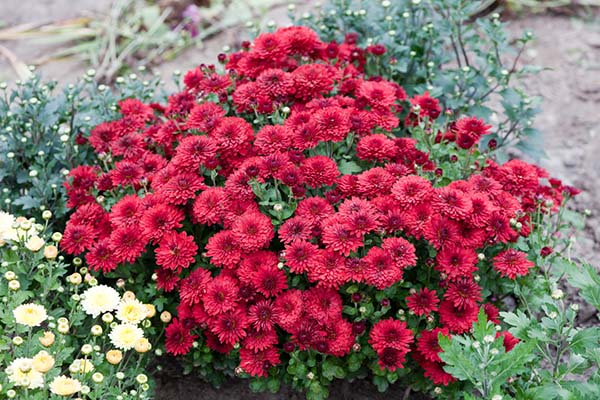
Content
Varieties and varieties of chrysanthemums
Conventionally, all chrysanthemums can be divided into 2 types:
- Large-flowered (Indian) - depending on the variety, the diameter of the inflorescences can be about 10-25 centimeters;
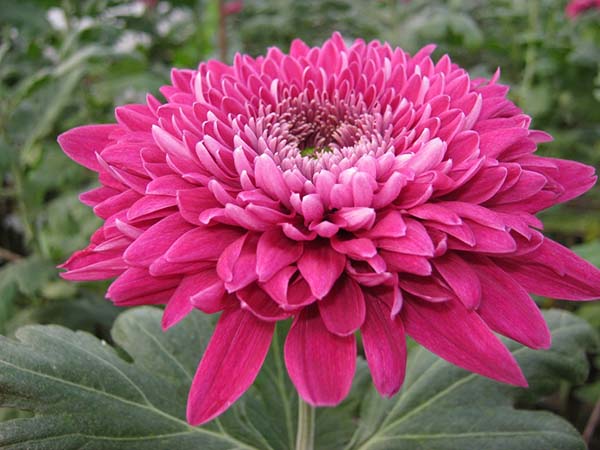
- Small-flowered (Korean) - the diameter of the inflorescences is from 2 to 9 centimeters.
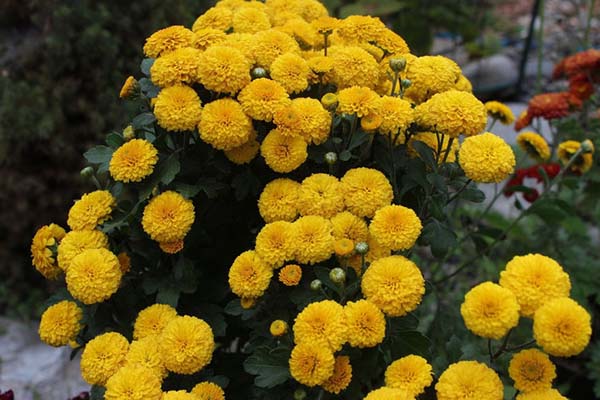
As a rule, it is the perennial Korean varieties that winter well (but better with additional shelter) are planted and grown in our gardens. And the most popular are spherical garden chrysanthemums (multiflora).
Large-flowered varieties are most commonly used for commercial purposes, i.e. for cutting and making bouquets, because they need warmer conditions, clearly not in the middle zone or the Urals and Siberia, where they simply freeze out.
Video: types and varieties of chrysanthemums
Chrysanthemum breeding methods
Basically, garden chrysanthemums are propagated by dividing the bush or by cuttings, in other words, by vegetative methods. But often it is also grown from seeds.
By the way! Large-flowered and small-flowered (Korean) species reproduce identically.
Sowing seeds
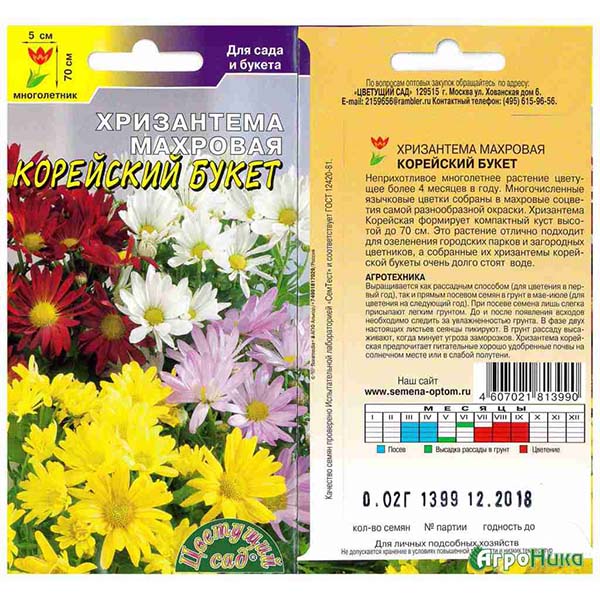 Perennial chrysanthemums can be sown with seeds, but varietal characteristics will not be preserved when collecting planting material and sowing it again. If you nevertheless decide to buy seeds, then it is better to first sow them for seedlings (in February-March), dive in the phase of two true leaves, and when the threat of return frosts has passed, plant them in the ground (or a pot). And then by the fall you will be able to get flowering bushes. Alternatively, you can try open field direct sowing in May-June.
Perennial chrysanthemums can be sown with seeds, but varietal characteristics will not be preserved when collecting planting material and sowing it again. If you nevertheless decide to buy seeds, then it is better to first sow them for seedlings (in February-March), dive in the phase of two true leaves, and when the threat of return frosts has passed, plant them in the ground (or a pot). And then by the fall you will be able to get flowering bushes. Alternatively, you can try open field direct sowing in May-June.
Dividing the bush
Once every 2-3 years, the root system of the garden chrysanthemum grows excessively, begins to degenerate, the flowers become smaller, so the plant should be rejuvenated, that is, divided.

Dividing the plant is quite simple: you need to carefully dig up the bushes and divide them into several copies (with your hands, pruning shears or even a shovel). Then place them in separate holes and shade them with a non-woven material from the sun (stick 4 sticks and throw a cover on them) so that they do not get burnt while they are being taken.
Video: transplanting chrysanthemums by dividing the bush
Cuttings
It is convenient to cut chrysanthemums during autumn pruning. To do this, you will need to cut, or better break off, 5-8 centimeter shoots (the flowers themselves must be cut off, and only a couple of leaves should be left), which can be rooted either in a glass of water or in a common container in a special substrate (from peat and sand or in a mixture of perlite with the same peat) and cover with a plastic bag to create a greenhouse effect.
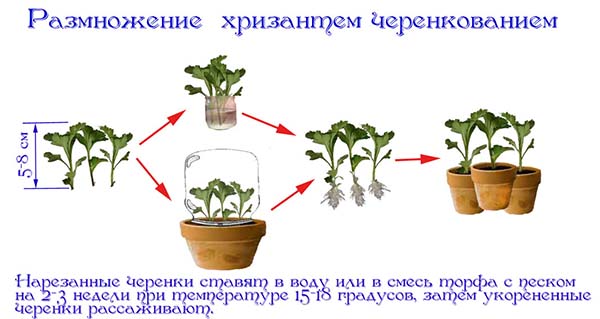
When the plant has roots (after 2-3 weeks), they should be planted in separate containers. In winter, young seedlings should be kept in a cool place (+4 .. + 6 degrees) and do not forget to water if necessary. When planting cuttings in spring, it is advisable to shade them for the first time (2 weeks), for example, by making a canopy from spunbond.
Video: cuttings of chrysanthemums in the fall
Video: cuttings in spring
Advice! You can also cut chrysanthemums from the presented bouquet.
Video: how to root chrysanthemums from a bouquet - cuttings and the result
Planting dates for chrysanthemums
Depending on the method of reproduction, the timing differs when it is better to sow, transplant (divide) or cut chrysanthemums.
So,sow seeds chrysanthemums for seedlings optimally in early spring (even in February-March), or in open ground in May, when the ground warms up enough (but then flowering should be expected only next year).
Cut chrysanthemum bushes most convenient in autumn during regular pruning, but keeping them in winter is difficult enough, and they often die, therefore better do it all the same in spring, survival rate in this case is much higher.
Dividing the bush and the transplant of chrysanthemums can be done both in the second half of spring, when the threat of age-related frosts passes (in April-May), and in late summer - early autumn (in August-September), so that the bushes have time to take root in a new place before the cold snap.
How to plant chrysanthemums in open ground
In order to eliminate all problems with the growth and development of perennial garden chrysanthemums in the open field, you need to remember about choosing a suitable place, as well as soil for planting.
Landing place
To successfully grow chrysanthemums in the garden, it is very important to stay at the right planting site. If possible, this should be the sunniest area in the country. The plant does not like constant drafts, but it does not like stagnant air either, so the place should be ventilated. It is optimal to choose more or less elevated areas, hillocks, slopes, since it is impossible to allow the root system to be constantly flooded with water.
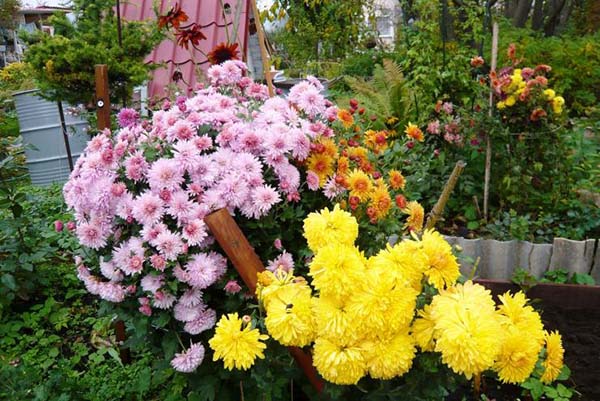
Garden perennial chrysanthemum is ideal for creating living borders, that is, for decorating garden paths, as well as creating beautiful compositions around the house.

The soil
This blooming perennial will grow smoothly in loose (moisture-permeable) and fertile soil. In terms of acidity, the soil should be neutral or slightly acidic. The optimal soil for planting garden chrysanthemums is well-drained loamy or sandy loamy soil.
If the soil is sandy, then the planting site should be well dug up and filled with compost or humus.
If your soil is heavy, moisture passes poorly (and its stagnation has a very negative effect on perennials), then you should make good drainage by pouring some sand on the bottom.
Direct landing
So you bought a bush (a seedling in a bag with soil) of garden chrysanthemum in the fall (or divided the mother bush, germinated cuttings), chose a suitable day (preferably cloudy), or early morning or late evening. It's time to plant him.
Step-by-step instructions for planting chrysanthemums in open ground:
- Decide on a place, prepare a landing hole (usually 30-40 cm deep).
- Drain as needed (put some sand on the bottom of the hole).
- Place the bush, straighten the roots.
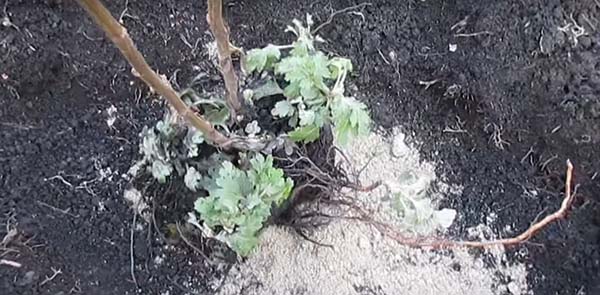
- Cover with fertile soil and compact well so that the roots are in good contact with the ground.
- Trim the bush 1/3 or even leave a small stump. Now it is important that the roots take root.
- Water liberally.
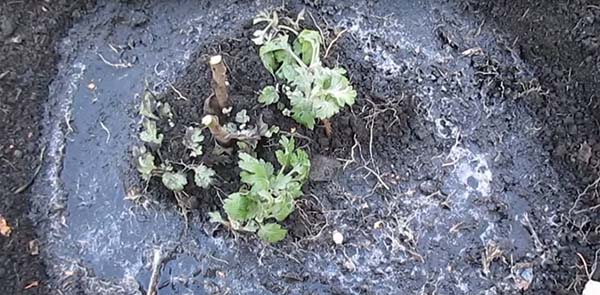
- Mulch with peat or humus.
Important! If you are planting several bushes at once, then the distance between them should be about 30-50 centimeters. Remember that the bushes are very prolific.
Video: a method of planting chrysanthemums in the fall
Outdoor Chrysanthemum Care
Chrysanthemum can hardly be called an unpretentious plant, on the contrary, it requires constant care. Therefore, in order to get beautiful bushes, these perennial flowers must be watered, fed, shaped (cut and cut), transplanted and propagated (divided and cut) and covered for the winter.
Important! And tall, usually large-flowered (but small-flowered chrysanthemums are also tall), chrysanthemums must also be tied to pegs so that they do not lie down or, even worse, do not break off.
Watering
The plant can be called moisture-loving, but it should not be waterlogged (in spring, natural moisture, as a rule, will be enough for it).
Advice! After planting (planting a rooted cuttings) or transplanting (dividing) chrysanthemums in the spring, young seedlings should be periodically watered moderately.
At the height of summer (June-July), a garden perennial requires abundant watering, since the process of bud formation occurs during this period. As soon as flowering begins (usually in August), watering should be reduced. With a lack of moisture, the stems of the plant will woody and stop branching.
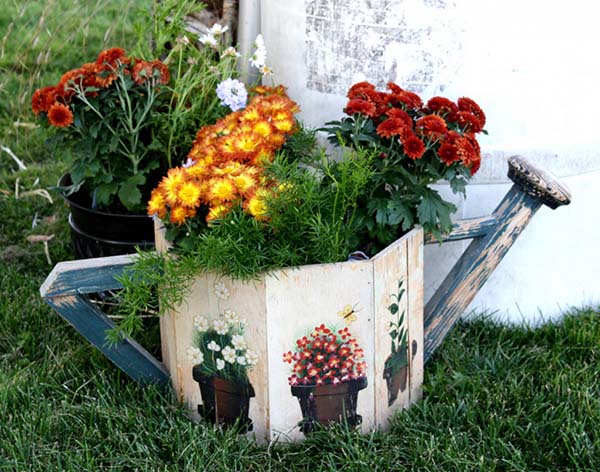
Important! Watering chrysanthemums must be done exclusively at the root. Sprinkling the crown is prohibited. Of course, if possible, it is advisable to use rainwater or settled water, and loosen it after each watering so that a dry crust does not form.
Top dressing
Chrysanthemums are fed according to the standard scheme:
- In early spring, nitrogen fertilizers are used to start the growth of green mass (for example, an infusion of mullein in a ratio of 1 to 10 or chicken droppings (1 to 15).
- In summer, during budding with potassium-phosphorus (more potassium) fertilizers - for a more intense and lush flowering (for example, wood ash).
- In autumn - phosphorus-potassium (more phosphorus). Phosphorus has a good effect on strengthening the root system, which is necessary when preparing a plant for wintering (for example, superphosphate and potassium sulfate).
There are special complex fertilizers for chrysanthemums for the entire growing season.
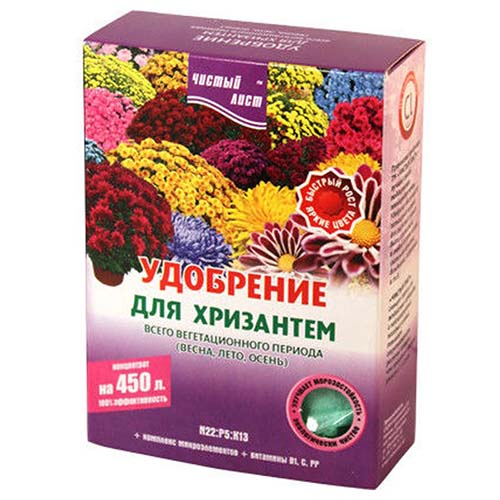
And if you stillgrow roses, then this fertilizer will come in handy.

Note! Top dressing must be carried out exclusively after watering and only at the root, in no case falling on the leaves, otherwise the fertilizer can cause them burns.
Shaping, cutting and trimming
If you want to get spherical chrysanthemum bushes, then they should do such a haircut in the spring. It is recommended to pinch the top (main shoot) every year after 5-6 leaves, when it reaches 10-12 centimeters. Likewise, the side shoots should be shortened. All these activities should be performed before budding begins.

By the way! Chrysanthemum multiflora grows independently in the form of a ball. It should only be pinched once, when 2 pairs of leaves appear on the shoots, then it will form itself.
If you are growing large-flowered chrysanthemums for cutting (for bouquets), then you should leave 2-3 stems, on which large buds and inflorescences will appear. It is also important not to forget to pinch them, timely removing the shoots that appear from the leaf axils.
For the winter, in the small-flowered (Korean) variety, of course, the entire upper part is cut off and a small stump is left (about 10 centimeters).

Preparing for winter
Some growers are afraid that even their small-flowered chrysanthemum can freeze out in winter, therefore, in mid-autumn (October), the trunk circle should be mulched with a thick 10 cm layer of peat or compost, and already at the end of autumn (November), cover the plant, for example, with spunbond or dry leaves, you can use hay, or even better spruce branches.
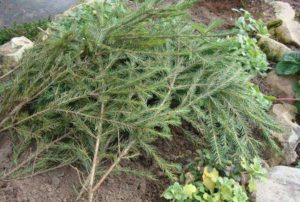
Note! It makes no sense to insulate and cover large-flowered chrysanthemums, since they do not winter in the open field. They need to be dug up and transferred to storage prior to spring disembarkation.
At the same time, Korean specimens can also simply be transplanted into pots and transferred to the basement or veranda for wintering, or you can also dig in a polycarbonate greenhouse at soil level and additionally cover.
By the way! Read in detail about the autumn care of chrysanthemums, their preparation for winter (shelter and digging-storage)in this article.
Video: how to keep chrysanthemums in winter: the right shelter
Diseases and pests
One of the most common troubles that occurs with a chrysanthemum is the first appearance white bloom, and then altogether blackening and dying off of its leaves. All this indicates a disease of a garden perennialpowdery mildew... Frequent rains and, as a result, waterlogging, thickened plantings, temperature fluctuations are the most favorable environment for the development of this disease. To restore the plant to its former beauty, it should be sprayed a couple of times with preparations containing copper in its base (for example, copper sulfate or Bordeaux liquid).
Often attacks chrysanthemums aphids and thrips, in this case, you will need to treat garden perennials with one of the special insecticidal preparations, for example, "Aktara" or "Fitoverm".
Video: spherical chrysanthemums - planting, care and shelter
If you are nevertheless imbued with the idea of planting and growing a bush garden perennial chrysanthemum in your summer cottage, focus on the features of care and its reproduction. And then you can amaze all your neighbors with the splendor of an autumn flower.
Video: features of care and reproduction of bush chrysanthemums

